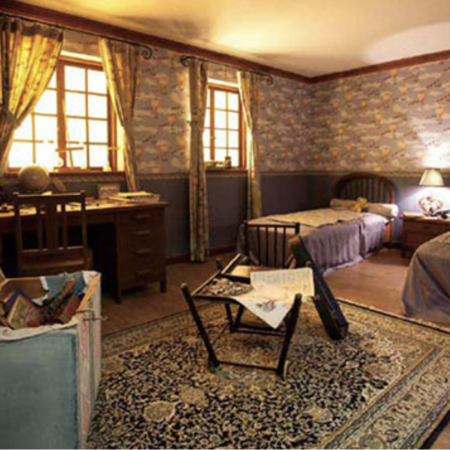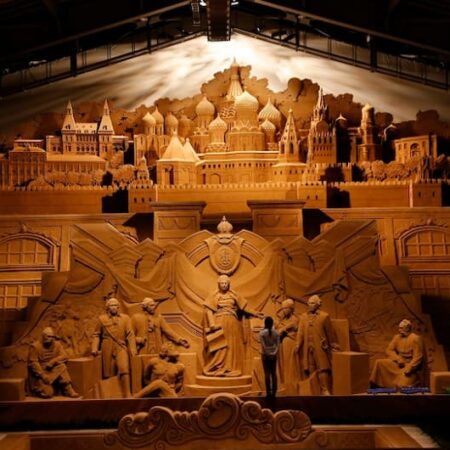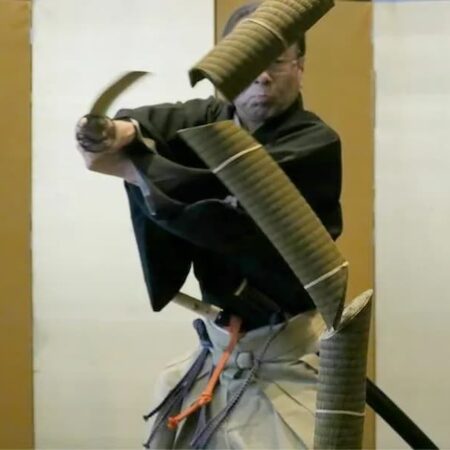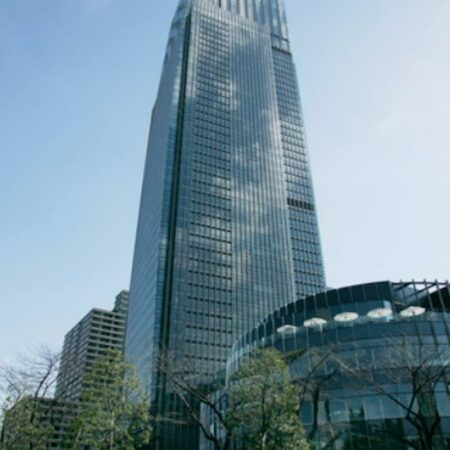Hiroshima Prefecture

Information
Hiroshima Prefecture is located in the southwest of Japan. It has a rich topography with the islands and the clear waters of the Seto Inland Sea in the south and the impressive Chugoku Mountains to the north. Hiroshima Prefecture’s population is 2.84 million, which is 2.2% of Japan’s total. This makes Hiroshima the 12th most populous prefecture in the country. Hiroshima Prefecture stretches 130 kilometers from east to west and 120 kilometers from north to south. It encompasses an area of 8,479 square kilometers, 2.2% of Japan’s total landmass, ranking it 11th in size among Japan’s 47 prefectures and metropolises.
Access
Hiroshima Airport serves both domestic flights (Tokyo among others) as well as international routes via Singapore, South Korea, Taiwan and China. The airport is located in Mihara to the east of the prefecture and is best reached via limousine bus from the central Hiroshima Bus Centre (SOGO), which takes about 55 minutes.
5 MUST-SEE spots
Kure Maritime History Science Museum

A museum that prospered as the city of Japan’s number one naval arsenal, the military port where the battleship “Yamato” was built, the history of Kure, and science and technology such as shipbuilding and steelmaking.
In the hall, a huge model that reproduces the battleship “Yamato” on a 1/10 scale is exhibited, and you can observe it up close.
In addition to an exhibition room that introduces the principles of science and technology centered on ships in an easy-to-understand manner through experience and experience, a large material exhibition room that displays valuable real materials such as the Zero fighter-type 62 (Zero fighter). There is also a facility where you can learn about the history of Kure, the technology of Kure, and the importance of peace.
Futhermore, every Saturday and Sunday, we hold science shows and craft classes that children can enjoy.
Information
Address: 5-20 Takaramachi, Kure City, Hiroshima Prefecture, 737-0029
Phone number: 0823-25-3017
Business hours: Exhibition room / museum shop 9: 00-18: 00 (Exhibition room admission is until 17:30)
Library 9: 00-17: 00
Regular holidays / closed days: Tuesday (closed the next day if Tuesday is a national holiday)
- Open daily from April 29th to May 5th, July 21st to August 31st, and December 29th to January 3rd.
Fee: General (university students and above) 500 yen
High school student 300 yen
Elementary and junior high school students 200 yen - Preschoolers are free of charge.
- This is the price for the permanent exhibition. A separate admission fee is required to enter the special exhibition.
Access: [Train]
・ Approximately 5 minutes on foot from JR Kure Station via the free passage
[car]
・ Approximately 35 minutes from the Sanyo Expressway Hiroshima Higashi JCT
・ Approximately 55 minutes from Takaya JCT on the Sanyo Expressway
[ferry]
・ Approximately 1 minute walk from Kure Chuo Pier
Atomic bomb dome

In December 1996, at the 20th UNESCO World Heritage Committee Merida Conference, it was registered as a World Cultural Heritage site as a building that conveys the devastation of nuclear weapons. (Designated range: Area where the Atomic Bomb Dome is located / approx. 0.39ha)
The Atomic Bomb Dome was built in 1915 as a facility for displaying and selling products in Hiroshima Prefecture, and also hosted Hiroshima Prefecture art exhibitions and expositions. When it was first established, it was named “Hiroshima Prefectural Product Exhibition Hall”, but after that it was renamed to “Hiroshima Prefectural Merchandise Display Center” and in 1933 to “Hiroshima Prefectural Industrial Promotion Hall”.
August 6, 1945, 8:15 am. The first atomic bomb in human history exploded about 160m southeast of the Hiroshima Prefectural Industrial Promotion Center and at an altitude of about 600m. The pressure of the blast was 35 tons per square meter, and the wind speed was 440 m. The building was wrecked by the blast and heat rays, and the fire was blown from the ceiling to burn it down. The blast worked almost vertically, miraculously avoiding the collapse of the center of the main building, but all the people inside the building died instantly. After the war, the wreckage of the former Industrial Promotion Hall became known by the citizens as the Atomic Bomb Dome because of the shape of the fornix and steel frame at the top.
Information
Address: 1-10 Otemachi, Naka-ku, Hiroshima-shi, Hiroshima 730-0051
Inquiries: History Hiroshima City Peace Promotion Division 082-242-7831
Preservation Hiroshima City Park Maintenance Division 082-504-2393
Access Hiroshima City Green Administration Division 082-504-2390
Price: Free
Access: [Train]
・ From Hiroshima Station, get off at the tram “Atomic Bomb Dome Mae”
[bus]
・ From the Shinkansen exit of Hiroshima Station, get off at “Genbaku Dome-mae” on the Hiroshima City Circulation Bus (3 routes of Meipuru-Pu Orange, Green, Lemon and Blue Route departing from Hiroshima Port)
・ From the south exit of Hiroshima Station, get off at the local bus “Genbaku Dome-mae” or get off at “Kamiyacho” and walk for about 5 to 10 minutes.
・ From Hiroshima Airport, get off at “Hiroshima Bus Center” bound for Hiroshima Bus Center, and walk southwest for about 5 minutes.
Hiroshima Peace Memorial Museum

The Hiroshima Peace Memorial Museum was opened in 1955 with the aim of communicating the reality of the damage caused by the atomic bomb to people all over the world and contributing to the abolition of nuclear weapons and the realization of permanent world peace, which is the heart of Hiroshima.
At 8:15 am on August 6, 1945, Hiroshima was the first in the world to be damaged by an atomic bomb. Most of the town was destroyed and many people lost their lives. Even those who barely survived suffered great physical and psychological damage, and many A-bomb survivors are still suffering.
The Peace Memorial Museum collects and displays photographs and materials showing the remains of the A-bomb survivors and the devastation of the A-bomb, as well as the history of Hiroshima before and after the A-bomb and the situation during the nuclear age.
In addition to holding lectures on A-bomb experience by A-bomb survivors, we also lend out materials for peace learning.
Information
Address: 1-2 Nakajima-cho, Naka-ku, Hiroshima-shi, Hiroshima 730-0811
Phone number: 082-241-4004
Business hours: [March-July] 8: 30-18: 00
[August] 8: 30-19: 00 (until 20:00 on August 5th and 6th)
[September-November] 8: 30-18: 00
[December-February] 8: 30-17: 00
Please enter at least 30 minutes before the closing time.
Regular holidays / holidays: December 30th-December 31st
- However, the Information Reference Room will be closed from December 29th to January 1st.
Price: Adults (university students and above) 200 yen
High school student 100 yen
Free for junior high school students and younger
160 yen for 30 or more adults (university students and above)
Free for 20 or more high school students - Free for high school students on Saturdays (excluding holidays, spring / summer / winter holidays).
- If you show an official certificate that confirms that you are 65 years old or older, you can enter the museum for 100 yen.
Access: [Train]
・ Tram from Hiroshima Station
Get off at “Fukuromachi” bound for Hiroshima Port (Line 1) and walk for about 10 minutes
Get off at “Genbaku Dome-mae” for Nishi-Hiroshima (Line 3), Enami (Line 6), Hiroden Miyajimaguchi (Line 2), and walk for about 10 minutes.
[bus]
・ Route bus from the south exit of Hiroshima Station
Immediately after getting off at “Peace Memorial Park” bound for “Yoshijima Sales Office” or “Yoshijima Hospital” on Hiroshima Bus No. 24 (Yoshijima) Line from Bus Stop No. 4
・ From the Hiroshima Station Shinkansen exit, take the Hiroshima City Circulation Bus (Meipuru-Pu Orange, Green, Lemon 3 routes and Blue Route from Hiroshima Port) and get off at “Peace Park Mae”
・ From Hiroshima Airport, get off at “Hiroshima Bus Center” bound for Hiroshima Bus Center and walk for about 10 minutes.
[car]
・ From National Highway No. 2, Fukuyama / Higashi-Hiroshima, head toward Hiroshima Station, and from Iwakuni / Hatsukaichi, head toward Nishi-Hiroshima Station. From there, head toward Peace Boulevard and use the nearby toll parking lots.
・ From the highway (Sanyo Expressway), head south on Route 54 from Hiroshima IC toward Hiroshima Castle / Hiroshima Bus Center, then head toward Peace Boulevard and use the nearby toll parking lot.
Itsukushima Shrine

With a bold and original layout with the sea as the site, it is one of the most famous companies in Japan that has mastered the essence of Shinden-zukuri in the Heian period. It was built in its present form by Taira no Kiyomori in the 12th century.
The precincts on the shallow beach are a graceful sight as if they were floating in the sea at high tide. The contrast with the green behind it is also exceptionally beautiful. It was registered as a World Heritage Site in 1996.
Information
Address: 1-1 Miyajima-cho, Hatsukaichi-shi, Hiroshima 739-0588
Phone number: 0829-44-2020 (9: 00-16: 00)
Business hours: January 1st 0:00 to 18:30
January 2nd to January 3rd 6: 30-18: 30
January 4th to the end of February 6: 30-17: 30
March 1st-October 14th 6: 30-18: 00
October 15th-November 30th 6: 30-17: 30
December 1st-December 31st 6: 30-17: 00
Regular holidays / holidays: Open all year round
Price: Adults 300 yen, High school student 200 yen, Junior high and elementary school students 100 yen, Adult 250 yen, High school student 150 yen, Junior high school student 70 yen
- Itsukushima Shrine and Treasure Museum have a common discount and a group discount. (Purchase common tickets only at the entrance of the shrine)
- For school trips, teachers, photographers, and nurses will be charged a student fee.
Access: [Ship]
・ Approximately 10 minutes by ferry from Miyajimaguchi Pier, approximately 15 minutes on foot from Miyajima Pier
Tomonoura townscape

Tomonoura has prospered as a “port waiting for the tide” from ancient times, and the port facilities from the Edo period, the emotional townscape, and the old storehouses remain as they are. In 2017, it was selected as an Important Preservation District for Traditional Buildings in the country. It is also famous as a place where many historical figures stopped by and Hayao Miyazaki stayed and devised the concept of “Ponyo on the Cliff by the Sea”.
In addition, the Hollywood movie “Wolverine: SAMURAI” and “Kiyoku Yawaku” starring Masami Nagasawa have become locations, and former AKB48’s Misaki Iwasa’s enka “Tomonoura Bojou” has been released. Hmm.
Why don’t you walk around the retro and nostalgic back alleys? You can feel as if you have traveled back in time.
Information
Address: Tomo, Tomo-cho, Fukuyama-shi, Hiroshima 720-0201
Phone number: 084-928-1043 (Fukuyama City Economic and Environmental Bureau Tourism Division)
Access: [Bus]
・ Approximately 30 minutes from JR Fukuyama Station to “Tomonoura” or “Tomonoura” bound for “Tomo Port”






